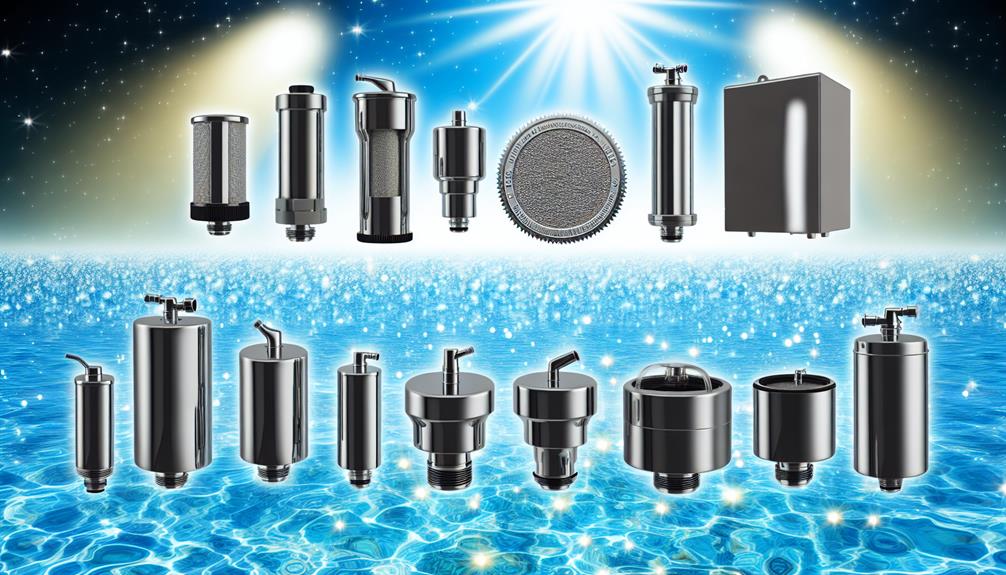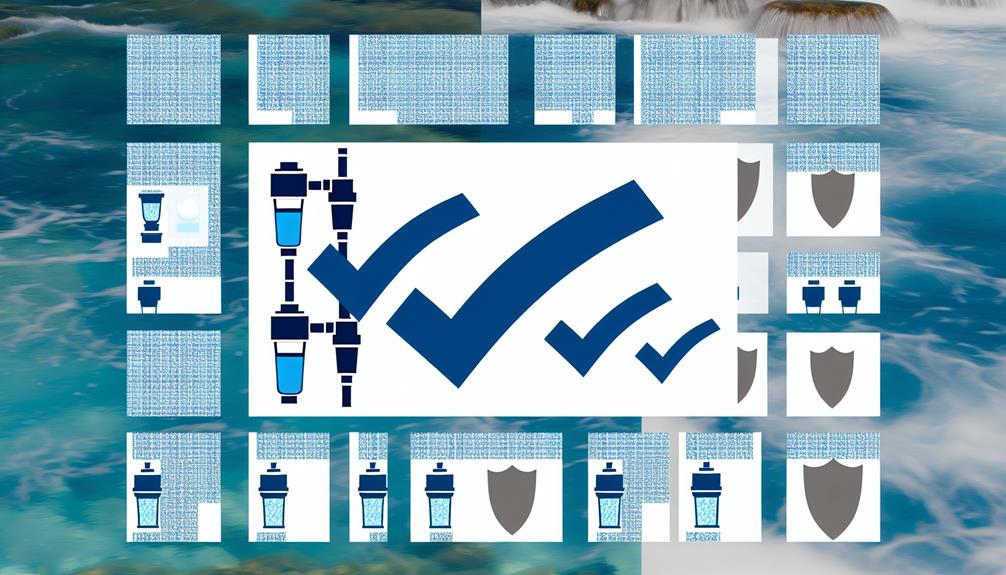You may not be aware, but when it comes to the intricacies of Occupational Safety and Health Administration (OSHA) regulations, there's a surprising lack of specificity regarding water filters in the workplace.
While you're diligently ensuring that the water cooler is full and the break room is stocked, you might overlook the fact that OSHA mandates employers to provide potable drinking water, which indirectly implicates the quality of water filters used.
As an employer, you're tasked with upholding these standards, which are intertwined with guidelines from the Environmental Protection Agency (EPA). However, the conversation doesn't end with simply acknowledging these requirements.
To fully grasp the implications for your business, and to ensure you're not falling short on compliance, it's crucial to consider how these regulations might affect the choices you make about water filtration systems.
Let's explore the often overlooked details that could have significant impacts on your operations and employee well-being.
Understanding OSHA Water Standards
To ensure employee safety and health, OSHA mandates that employers provide access to potable drinking water that complies with specific sanitation and quality standards. This means that you, as an employer, are required to maintain a water supply that meets the OSHA Drinking Water Requirements, ensuring that all water intended for drinking, washing, cooking, or other personal uses is safe and free from harmful contaminants.
When it comes to potable drinking water, OSHA regulations stipulate that you must have a suitable water dispenser or drinking fountain available. This mustn't only dispense water safely but also meet the necessary sanitary conditions to prevent health hazards. It's vital that the water supply is regularly tested and that any water filter or other purification system is maintained according to manufacturer instructions to guarantee water quality.
Moreover, while non-potable water can be used for certain tasks such as cleaning or firefighting, you're responsible for ensuring it's clearly labeled and doesn't contain any hazardous substances that could compromise employee safety.
This analytical approach highlights the importance of adhering to regulatory-focused standards to uphold workplace health and safety protocols.
Requirements for Drinking Water Quality
As an employer, you must ensure that the drinking water you provide adheres strictly to OSHA and EPA standards, safeguarding it from contaminants like arsenic, chlorine, and lead. You're tasked with delivering water that meets stringent guidelines to protect public health. This means the water must be potable — safe and clean for all your employees to drink.
OSHA's role in Health and Safety mandates that you provide potable water to prevent any health hazards that could arise from contaminated drinking sources. This requirement aligns with the EPA's standards, which specify the acceptable levels for various contaminants. Tap water can be considered potable if it adheres to these EPA guidelines.
It's important to recognize that non-compliance isn't just a minor oversight; it's a violation of OSHA regulations. To maintain drinking water quality, you're responsible for regular monitoring and ensuring that filtration systems or other water treatment methods are functioning correctly and effectively removing harmful substances.
Water Dispensing Equipment Compliance
Employers are required to provide water dispensing equipment that not only complies with OSHA and EPA standards but also ensures the safety and accessibility of drinking water for all employees. This means that any water cooler or water dispenser provided must follow strict regulatory guidelines to maintain water dispensing equipment compliance.
To meet the standards, water dispensers must be designed to prevent contamination. They should be sealed, have a closing mechanism, or dispense water through a tap. The employer shall provide potable drinking water that's free of charge and can't pass any cost onto employees. Moreover, it's essential for water dispensers to supply an adequate amount of water, ensuring employees can take water breaks as needed without facing a shortage.
In addition, OSHA mandates that if portable containers are used to provide drinking water, they must be clearly labeled and dedicated solely for that purpose to avoid any mix-up with non-potable sources. Non-potable water sources, meanwhile, should be conspicuously marked to prevent accidental consumption and mustn't contain any substances that could be hazardous to health.
Addressing Non-Potable Water Usage
Understanding the proper use and management of non-potable water is crucial for maintaining workplace safety and compliance with OSHA's stringent regulations. As an employer, you must ensure that your employees are aware of the distinction between non-potable and potable drinking water. It's not just about providing water; it's about safeguarding health and adhering to the law.
Under the Occupational Safety and Health Administration's (OSHA) guidelines:
- Non-potable water sources must be clearly marked to prevent accidental consumption, thereby protecting employees from potential harm.
- The employer shall provide potable drinking water in sufficient amounts, accessible in all drinking areas, at no cost to the employees.
- Regular maintenance of water filters and dispensers is mandatory to avoid contamination and to ensure the quality of drinking water.
The Safety and Health Act empowers OSHA to penalize businesses that fail to label non-potable water appropriately or neglect to provide safe drinking water. In your role, you're not just ensuring that employees have access to water; you're affirming their right to safe, drinkable water.
Mitigating Non-Compliant Water Issues
Recognizing the importance of distinguishing between potable and non-potable water, it's essential to address how to effectively handle instances where water doesn't meet OSHA and EPA standards.
As an employer, you're mandated to provide drinking water that's potable, aligning with water quality standards. Should your water supply fall short, immediate measures to rectify non-compliant water issues are crucial.
Under Occupational Safety and Health regulations, you mustn't only supply water but also ensure it's from a safe and sealed dispenser. If the water available violates Health and Safety regulations, you'll need to explore solutions such as water filters. These devices can be instrumental in bringing water quality up to code.
Remember, the employer shall provide potable water at no cost to employees. This means that sanitation facilities must be equipped with compliant water sources or suitable filtration systems. In the case of non-potable water, clear labeling and strict usage guidelines are imperative to prevent its use for drinking, washing, or cooking.
Adhering to OSHA standards is non-negotiable. Vigilance in monitoring water quality, maintaining equipment, and educating workers about water safety can mitigate health risks and ensure compliance.

